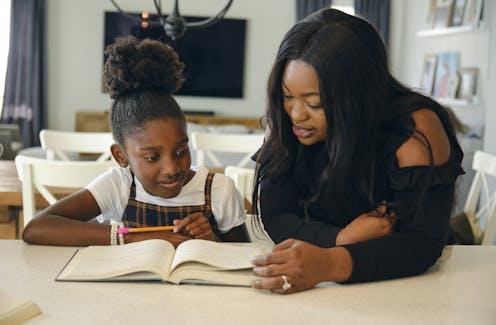Class and race can create divides between donors and a cause they support − putting stress on those
To satisfy donors, a nonprofit felt forced to use language from the corporate world. In doing so, it was hard to spell out what its mentoring program was actually accomplishing.

Relying on wealthy, largely white donors for funding can lead nonprofits that run after-school programs for low-income children of color to feel pressured to skew their priorities. In part because of class and racial differences, these nonprofits can have trouble conveying how the interests of the programs’ participants are being met while also satisfying donors’ demands.
This was evident in an in-depth case study I wrote about in Children & Schools, an academic journal. The after-school program I studied supports low-income girls in a Northeastern city. The girls, who are in grades 3-5, receive free weekly mentoring sessions.
The mentors are college students who volunteer to help build the girls’ self-confidence and ambition by reading and discussing stories with them about female athletes, film directors, politicians and human rights activists, among other role models. The organization is led by a Black woman who is from the local community, and the nonprofit uses its own original curriculum.
By participating in the program, the girls get a safe way to explore their “many identities,” a member of the nonprofit’s staff told me.
However, while conducting interviews, convening focus groups, analyzing documents and observing a virtual fundraising event, I consistently found that the group’s staff felt pressured to use the corporate jargon of its donors when communicating with them. The donors are predominantly wealthy white business executives.
The nonprofit’s executive director said one of the benefits of participating in the mentoring sessions is their playfulness. The girls can “just be free, and just have fun and talk to their mentors, and journal,” she said.
Despite her confidence that the program is worthwhile, she said she often experiences a disconnect while fielding her donors’ questions.
“It’s always like, ‘What’s your business model? And what’s going to be your key performance indicators? How are you going to grow?‘” She felt pressured to talk as if she were running a private business and to focus on goals more relevant to a business rather than those that can best support the mentored girls.
She was frustrated that she has to focus so much on fundraising numbers, while less tangible wins, like “the joy of the program participants,” fail to come through to the donors.

Why it matters
Large numbers of K-12 students participate in programs run by nonprofits throughout the school year and during vacations.
Many of these valuable opportunities benefit children and teens who attend chronically underfunded public schools.
National organizations, such as the YMCA and the Boys & Girls Club of America, run some of these programs. Others operate on a smaller scale. They can provide tutoring or teach chess, drama, martial arts and other skills. It’s common for them to get a mix of government and private funding. Some also charge tuition.
Other researchers have found that participating in community-based programs can benefit low-income kids and their neighborhoods.
Because of their association with schools, those nonprofits must comply with strict requirements due to local state, city and school system rules. At the same time, they have to satisfy their donors’ own demands and expectations or risk losing out on much-needed cash.
What’s next
While I didn’t interview this nonprofit’s donors in the pilot research described here, I am now doing so for my dissertation.
The Research Brief is a short take about interesting academic work.
Abbie Cohen's dissertation research is supported by the American Association for University Women.
Read These Next
West Antarctica’s history of rapid melting foretells sudden shifts in continent’s ‘catastrophic’ geo
A picture of what West Antarctica looked like when its ice sheet melted in the past can offer insight…
From truce in the trenches to cocktails at the consulate: How Christmas diplomacy seeks to exploit s
World leaders like to talk up peace at Christmastime. But alongside the tales of seasonal breaks in…
How to reduce gift-giving stress with your kids – a child psychologist’s tips for making magic and a
Depending on family circumstances and a child’s personality type, gift giving runs the gamut of fun…






